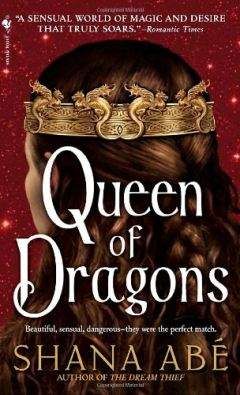Bruce then explained the real strategic justification he would use for the new system: It would allow them to move newly acquired health care facilities into their overall process faster, which would ultimately save them money faster and enable them to more quickly add to the overall bottom line.
This team knew that without linking the purchase to more strategic pains, Bruce would not receive funding approval. Through this questioning, they confirmed that the solution could be linked to the strategic gains of powerful stakeholders and that the project sponsor could articulate linkage between their solution and these strategic gains.
Relationships Alone Are Not Enough, Either
Another flaw we see in some organizations is that they focus on building preference through linking solutions alone or through relationships alone. If you focus on linking solutions alone, you ignore the power of relationships. There are over 50 ways that people build influence with each other.
Stephen Covey, in his book The Seven Habits of Highly Effective People, refers to this as “building emotional bank accounts with each other.” I’ll trust you for two reasons: (1)because you’re an expert, you’re reliable, you can solve my problems, you have the company and the functionality behind you, and I know you’ll get the job done, or (2)because we went to school together, you know my family, you’re my friend, you know my business, you’ve worked with us before, and I know you’ll work night and day to get things done for me.
But what if it’s a tie? If it’s a tie, I’m going with my friend. Whenever the product or solution is a tie, relationships are the differentiator. But when it’s a high-risk situation and I’m betting my job or the company on it, I can’t go to the committee or my management and say, “I prefer this company because the salesperson is my friend.” I have to provide a business case for why I prefer you over another company.
Frankly, we’re just not that lonely.
Likewise, many salespeople are counting on relationships alone. They are professional friends, or they think they can get by on their personality, by entertaining their clients, and by being grateful for the business. This just isn’t enough anymore. Buyers want better business values.
About a year ago I spoke with a trade association, and the head of procurement for a major electronics retail organization was there. He said something to the effect of, “People call on us all of time saying that they want to be partners and build a relationship with us. Yes, we do have partnerships. We have about 3 strategic alliances and 12 preferred vendors. But everybody else is a commodity to us and we put them out for reverse auctions. People come by and say they want to have a relationship with us. Frankly, we’re just not that lonely.”
While there are some lonely buyers out there, they still have to build business value for having selected your company. In relationships alone, you can linger, but you can’t last. On solutions alone, you may get outsold while you have a superior product if you don’t have strong enough relationships.
Our principal, Joe Terry, was working a big deal once where the divisional vice president had the power of a “gorilla” in an algebraic democracy. His vote counted “the sum of all votes plus one.”
Joe had a good relationship with the vice president, based on previous experience, and assumed that he had a preference for our firm.
But in the executive presentation, the vote came down to five for Joe and one against him. After some research, Joe discovered that the vice president was also personal friends with the competitive salesperson and played golf with him every week.
Turns out, the vice president, who we thought was our ally, was the one vote for the competition.
Joe knew that he had the superior solution, so he went to the vice president and said, “I know you have a difficult decision to make because you are also friends with my competitor.”
After talking with Joe, the vice president agreed that Joe’s solution would achieve his strategic objectives and that it would be very risky for him to try to achieve those same objectives with the competitor’s solution.
Joe suggested that the vice president abstain from the vote and allow the other five people on the committee to make the choice. This way, he could tell his friend, Joe’s competitor, that he had been outvoted.
This proved to be a way for the vice president to save face with his friend and to reach his business objectives by going with the better solution.
Joe won the deal, and the vice president became one of the biggest supporters that drove the initiative throughout the company.
The key to this strategy was to recognize that personal preference was only good if he could also solve the problem. Had Joe not had a relationship with the vice president, he probably could not have had this type of discussion with him. And if he had not had a superior product, relationship would have not been enough to win the deal.
Defining Your Best Practices Sales Cycle
The Six P’s methodology includes the elements that need to be attended to in order to win a complex sale. We teach them sequentially, but in fact, salespeople use them simultaneously.
Once you qualify an account with a dispassionate process, you use a combination of a stakeholder analysis and a metaphor of the sales cycle which we have named the canyon and crucible (see appendix Figure A-1).
The stakeholder analysis identifies each buyer’s pain, power, part, and preference in order to determine a plan to win the heart of each of the key voters or live without it. This process is overlaid with the canyon and crucible, which is a chronologic assessment of the dynamics of changing issues and decision-making politics as they go through a competitive evaluation. Combined, we’ve put a time dimension on the sales cycle.
The best practice in the industry today is to take your sales cycle and define it in terms of the phases that are unique to your company and your industry. Salespeople tend to do the right things in the sales cycle, just not always at the right times. And timing is critical. How you coach depends on which phase of the sales cycle you are in. In general, we want salespeople doing things earlier than they have been doing them before. The other reason that phases are important is that they match your forecasting process.
The Sales Cycle Coaching Template—A Vision of Victory
The first thing we do with a client is take the company’s sales management team and a selected number of the company’s top salespeople and identify, by phase, what an ideal sales cycle looks like. What does a vision of victory look like at each step along the way?
Information drives strategy. We start by defining all of the coaching questions managers will ask during the sales cycle to see if they have included the right activities in the sales cycle that are necessary to answer those coaching questions.
Then, by phase, what are the desired outcomes, questions to ask, information needed, roles and responsibilities, qualification criteria, and action items (with due dates and owners) for each of those phases? The result ends up being a template of an ideal sales cycle from which managers can coach and compare. Because they built it, they own it, and it is tailored to their business. It is then provided to all salespeople so that they won’t feel ambushed when the tough questions are asked.
The R.A.D.A.R. six P’s methodology, combined with your sales process, creates a best practice sales template unique to your organization. The purpose of a sales cycle template and a coaching session is to (1)guide the sales team on how to execute these action items most effectively, (2)identify who to focus your efforts on, and (3)explain why the salesperson should do certain activities or what is the risk of not doing the activity.
All a salesperson has is time, and the decisions he makes on that time are critical to his success. You can’t really “make time,” and you can’t really “save time.” All you can do is change the quality of time spent.
The idea is to have one sales cycle for your company for each market segment or industry. By the way, it shouldn’t take that long to build this. We’ve seen companies spend over $1 million and months with consultants to have this built. Then it sits in a binder without training or execution.
The challenge comes — and where many of these projects fail — in the action items, questions, anticipated risks, politics, and potential objections. Most plans also don’t take into account a thorough transition to post-sales team members.
A best practice sales cycle should be built in three days for less than six figures. For Apple Computer, we built eight of these—one for each industry—because the solution sets and buying processes for each buyer in each industry are different.
The way you sell to government is different from the way you sell to higher education, which is different from how you sell to health care. You may have a different buying cycle for a different solution set or industry. But once it has been developed, it should become the template for sales execution and coaching for your salespeople and managers.
Forecasting Is Now Strategic
Under the Sarbanes-Oxley Act of 2002, sales forecasts are now a serious issue in U.S.-listed companies. Companies have to be compliant and more transparent to stockholders. As a result, boards of directors want to know what sort of analysis is behind the sales forecast.
If the CEO says that everything is going to be okay and then gets embarrassed at the end of the quarter because some deals slipped and didn’t close, investors get surprised and now file lawsuits. It happens about once a quarter, and the result is a stock price that can fall 10 to 40 percent. These are high stakes for a weak forecasting system.
Why Forecasting Doesn’t Work Well
One source of sales discipline is the forecast itself — especially for product-oriented companies, where the revenue is recognizable when the sale is made. But most forecasts aren’t forecasts in the first place. Instead, they’re “pastcasts,” looking in the rear-view mirror at what has happened to date.
If the purpose of the forecast is simply to predict revenue rather than to manage and coach the pipeline, then it fails to reach its potential. In reality, many deals are already out of control by the time they hit the forecast and become visible to management.
In our experience, most forecasts don’t separate the issues of if and when you’re going to get the business. The flaw lies in the nature of competitive evaluations. Most CRM systems simply have line-item lists of opportunities, close dates, dollar amounts, and some sort of A-B-C or 50–70–90 percent ranking.
This is actually a percentage of expected value built on the confidence level of the manager, which may come close to the total company forecast by the law of large numbers. In reality, though, you don’t get a percent of a deal. You either win it or you don’t.
![Rick Page - Make Winning a Habit [с таблицами]](https://cdn.my-library.info/books/no-image.jpg)



